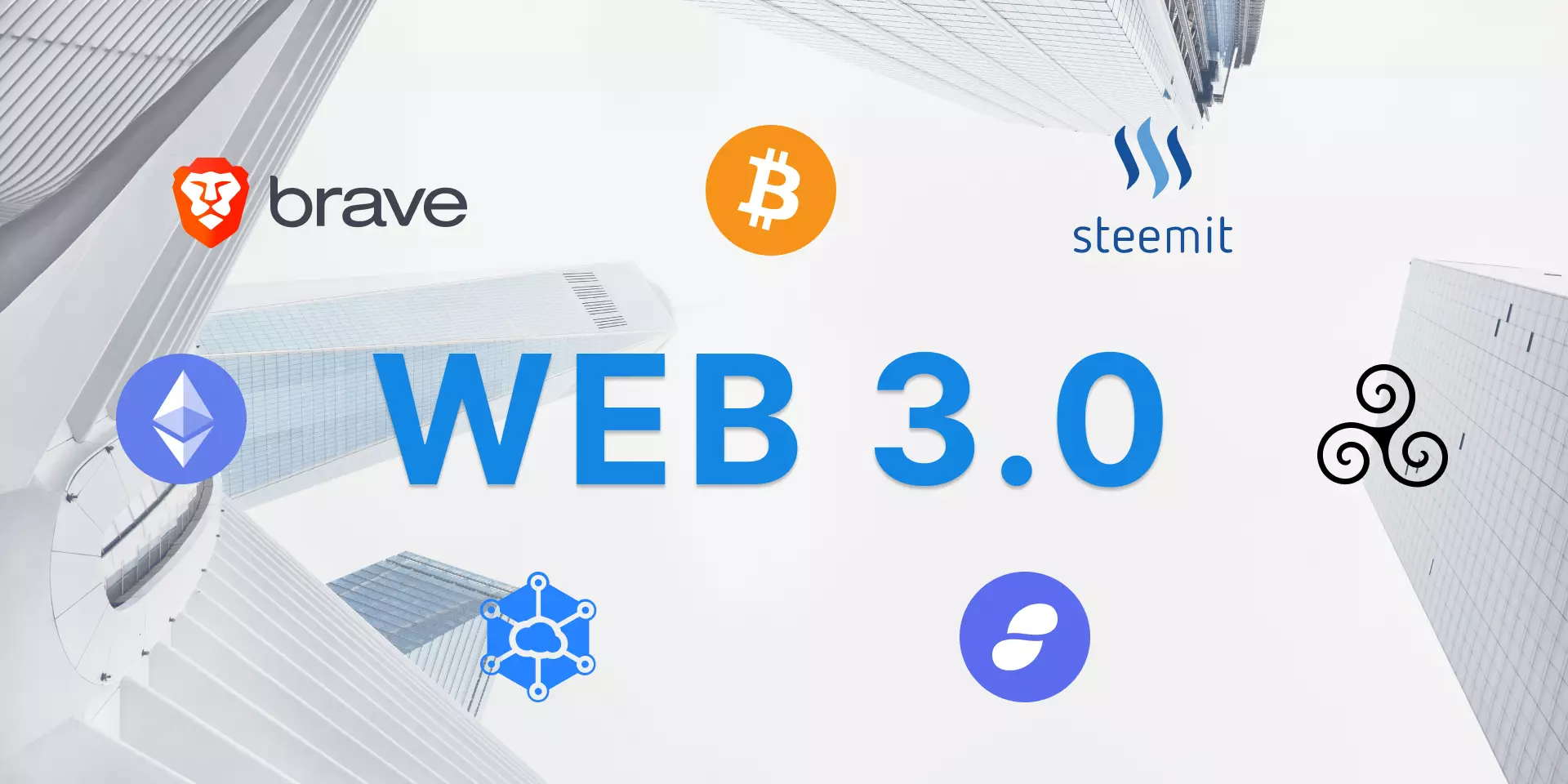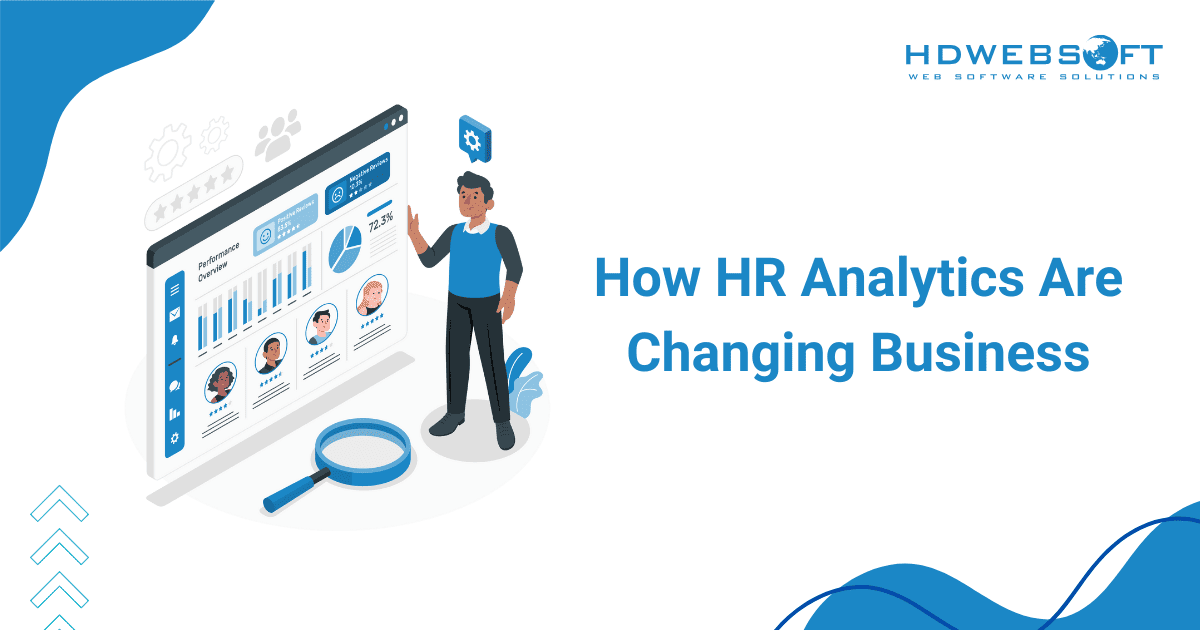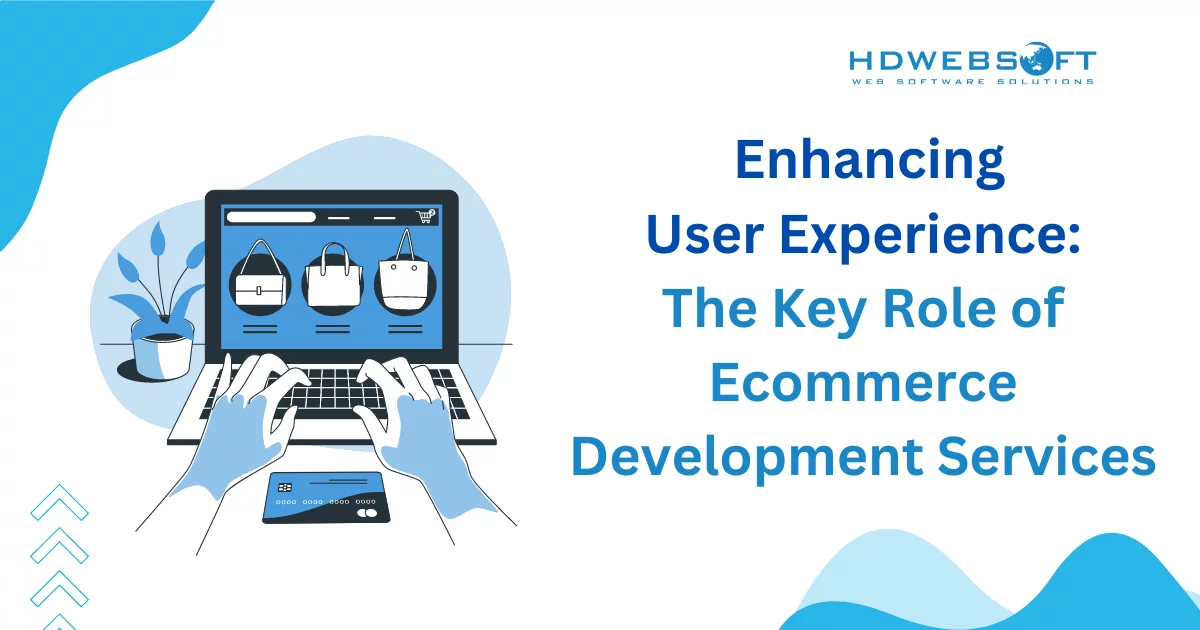
What is Web3? And its evolution?
The entire lineage or evolution of the Web can be broken down into three stages. Starting from the fundamental Web 1, now we can enjoy the benefits that Web3, the latest version, offers. Read on to keep yourself well-informed about what Web3 is and its features.
- 1) The Evolution Of Web
- 2) What is Web3’s Technology Stack
- 3) Top 10 Web3-Related Developer Jobs To Apply For
- 3.1) React Native Developers at HDWEBSOFT
- 3.2) iOS Native Developers at HDWEBSOFT
- 3.3) Android Native Developers at HDWEBSOFT
- 3.4) UI/UX Designers at HDWEBSOFT
- 3.5) Testers at HDWEBSOFT
- 3.6) PHP Developer at HDWEBSOFT
- 3.7) .NET Developer at HDWEBSOFT
- 3.8) Node.js Developer at HDWEBSOFT
- 3.9) Front-end Developer at HDWEBSOFT
- 3.10) Python Developer at HDWEBSOFT
The Evolution Of Web
The web has undergone radical changes since the beginning, and its evolution can be classified into three progressive phases: Web 1.0, Web 2.0, and Web 3.0.
What Is Web 1
The first iteration, Web 1, was mainly for consumers of content that primarily involved text or image format. Web 1 lasted around 13 years, from 1991 to 2004.
Web 1 comprises websites holding static content instead of dynamic HTML. In addition, data and content were hosted from a static file, and there was no interactivity at all. As a result, most people considered Web 1 a read-only system.
What Is Web2
While Web 1 was rather basic, Web 2 can be considered more interactive and socially inclined. Most of us have experienced Web 2 in its current form. We do not have to be a developer to create something on Web 2 – There are easy ways for virtually anyone to build applications, sites, and content. For instance, it is effortless now to share your thoughts with the world, upload a video for millions to see, and interact with your online assets.
Thanks to its simplicity, many people worldwide are becoming creators.
What Is Web3
To answer the question “What is Web3?”, there are a few core differences to be pointed out between Web 2 and Web3. The latter improves the Internet with
Web3 enhances the internet as we know it today with a few other added characteristics. Overall, Web3 is:
- Trustless
- Self-governing
- Verifiable
- Stateful
- Allowing Native built-in payments
- Permissionless
- Distributed and robust

In Web3’s domain, it is not recommended to build and implement applications that run on a single server or store data in a single database, often hosted and managed by a single cloud service provider.
Instead, Web3 applications run on blockchains, decentralized networks of many peer-to-peer nodes (servers). Also, they can run on a crypto-economic protocol. These apps are often called dApps, also known as decentralized apps. To ensure a stable and secure decentralized network, network participants are encouraged to provide the highest quality services to anyone using the service via competition.
Cryptocurrency is an important feature when it comes to Web3. It provides a financial incentive (tokens) for anyone participating in creating, governing, contributing to, or improving one of the projects.
Many web infrastructure protocols such as Filecoin, Livepeer, Arweave, and The Graph have issued utility tokens that power the protocols themselves. These tokens, at the same time, reward their participants. Even native blockchain protocols like Ethereum operate in this manner.
Web3 also offers computing, storage, bandwidth, identity, hosting, and other web services that cloud providers commonly provide.
What is Web3’s Technology Stack
What is Web3’s technology stack? It comprises four levels, from the root layers to protocol-extensible ones. As a result, it offers maximum comfort and innovation.
L4: Protocol-extensible user-interface cradle/ Browser
The top level of the stack includes the ability for the average user to interact with one or more blockchains.
In addition, protocol-extensible user-interface cradle /browser is a program for users to interact directly with the blockchain without technical implementation detail requirements. Typical examples would include Status, MetaMask, or MyCrypto.
L3: Protocol-Extensible Developer Apis & Languages
This layer of human-interactive languages and libraries allows developers to create programs and applications. There are a host of languages used to develop, such as Solidity and Vyper (Ethereum), Plutus (Cardano), and Rust (Substrate). Moreover, it is easier to create applications that interact with a blockchain thanks to frameworks like ethers.js, web3.js, and oo7.js.
L2: Second layer protocols
This layer improves the functionalities of the first layer, such as increased scaling, encrypted messaging, and distributed computing.
State channels
Blockchains can increase scalability by allowing nodes to communicate with each other off-chain, opening channels on the main chain, and writing only initial and final results. Cases in point are Bitcoin’s Lightning Network and Ethereum’s Raiden Network.
Plasma protocols
Plasma is another way of increasing scalability by building a system of blockchains. The main chain acts as the root, and the branch blockchains are limited from demanding resources from higher-level chains. Examples include Loom’s PlasmaChain and OmigeGO Plasma.
Encrypted storage
This mathematically encrypts and decrypts data at-rest (stored on a specific computer) and in-motion (transferred from one computer to another).
Heavy Computation
Heavy computation allows computation to be spread among many computers and proves that the computations are conducted correctly. Examples include Golem and TrueBit on Ethereum.
Distributed secret management
This allows information to be accessed only by authorized parties, including complex situations such as “decrypting this information requires all six parties to be present. Examples include Parity Secret Store.
Oracles
Oracles are a means to input off-chain data, like stock prices, onto a blockchain for smart contracts.
L1: First Layer Protocols
This layer provides the ability to distribute and interact with data.
Zero/low trust interaction protocols (Bitcoin, Ethereum, Parachains)
Zero/standard trust interaction protocols depict how different nodes interact and the trust computation and information from each. Most cryptocurrencies meet the definition of a Zero/intense trust interaction protocol.
Data distribution protocols
These protocols show how data is distributed and communicated between nodes in a decentralized system. Typical instances are IPFS, Swarm, and BigchainDB.
Transient data pub/sub messaging
This demonstrates how the data not meant to be permanently stored is conducted and how nodes are aware of it. Examples are Whisper and Matrix.
L0: Root Level Layers
This is the core level of the Web3 technology stack.
Zero/low trust meta protocols (Polkadot)
Zero/low trust interaction platforms form a zero/low trust interaction protocol to allow all members to share security access. Polkadot is an example of this.
Peer-to-peer (p2p) internet overlay protocols
This networking suite enables internal nodes to communicate in a decentralized way.
Platform neutral language
It is a means to execute the same program on different physical platforms (architectures, OSes, etc.). Examples can be EVM (Ethereum), UTXOs (Bitcoin), and Wasm (Polkadot).
That wraps up the core data to answer the question of what is Web3. If you need more information about job opportunities related, keep on reading.

A Web3 developer should be familiar with the concept of Web3, be proficient in the relevant programming languages, and have the right tech stack for the job. Currently, Web3 developers are in high demand, and there are an estimated half a million Web3 developers globally, compared to 32 million Web2 developers.
Below are the top 10 Web3-related developer jobs to apply for.
React Native Developers at HDWEBSOFT
Location: Right at the heart of Ho Chi Minh City, the economic capital of southern Vietnam.
HDWEBSOFT is looking for React Native developers to help take its rank to the next level. The candidates will develop iPhone and Android applications, and they will analyze and suggest solutions for specific scenarios. They should have at least one year of experience in relevant fields, proficiency in JavaScript, and be a team player.
Apply here.
iOS Native Developers at HDWEBSOFT
Location: Right at the heart of Ho Chi Minh City, the economic capital of southern Vietnam.
HDWEBSOFT is looking for experienced developers capable of developing significant components or modules and participating in creating quality source code, unit testing, and version control. It is advisable to have one year of experience using Objective C or Swift for iOS, solid ground on the entire mobile development cycle, and other aspects.
Apply here.

Android Native Developers at HDWEBSOFT
Location: Right at the heart of Ho Chi Minh City, the economic capital of southern Vietnam.
We recruit experienced Android Native developers to develop significant components/ modules, support design and maintenance, and help create quality source code, unit testing, and version control. One year of experience is a must, along with proficiency in Java Android and a solid understanding of the entire mobile development cycle.
Apply here.
UI/UX Designers at HDWEBSOFT
Location: Right at the heart of Ho Chi Minh City, the economic capital of southern Vietnam.
HDWEBSOFT is seeking UI/UX designers with at least one year of experience in software, web apps, and mobile device design. Mastery of the core design concept is a must. The candidates should be able to take a design from idea to wireframe to pixel-perfect.
Apply here.
Testers at HDWEBSOFT
Location: Right at the heart of Ho Chi Minh City, the economic capital of southern Vietnam.
HDWEBSOFT is looking for experienced testers who can create test cases, user acceptance tests, test projects from the end-user perspective, and support in QA. As such, the candidates should have experience with Agile/Scrum development processes and solid ground on software testing methods, tools, and processes.
Apply here.
PHP Developer at HDWEBSOFT
Location: Right at the heart of Ho Chi Minh City, the economic capital of southern Vietnam.
HDWEBSOFT is seeking a PHP developer responsible for coding, testing, maintaining, and troubleshooting web applications. You need at least two years of experience in relevant fields, experience with Frameworks/ CMSs, and solid ground on AJAX, JavaScript, HTML, CSS, and MySQL databases.
Apply here.
.NET Developer at HDWEBSOFT
Location: Right at the heart of Ho Chi Minh City, the economic capital of southern Vietnam.
HDWEBSOFT needs .NET developers who can be team players and responsible employees. The candidate should have one year of experience with Microsoft .NET frameworks, good background knowledge of JavaScript frameworks, and the ability to work in a fast-paced environment.
Apply here.
Node.js Developer at HDWEBSOFT
Location: Right at the heart of Ho Chi Minh City, the economic capital of southern Vietnam.
Attention! Node.js developers are in high demand here at HDWEBSOFT. We are looking for developers with at least two years of experience in the related fields, experience with more than 1 JavaScript framework, and solid background knowledge in JavaScript and CSS3 HTML/HTML5.
Apply here.
Front-end Developer at HDWEBSOFT
Location: Right at the heart of Ho Chi Minh City, the economic capital of southern Vietnam.
HDWEBSOFT is looking for a front-end developer responsible for building massive web applications and improving the current JavaScript publishing platform. The candidate should have at least one year of experience in any related field, proficiency in JavaScript and CSS3 HTML/HTML5, and the ability to work with more than 1 JavaScript framework.
Apply here.
Python Developer at HDWEBSOFT
Location: Right at the heart of Ho Chi Minh City, the economic capital of southern Vietnam.
The development team of HDWEBSOFT is looking for a Python developer. This person will be responsible for enhancing our Python publishing platform and building large-scale web applications. The ideal candidate should have two years of experience, be familiar with more than 1 Python framework, and be capable of working with front-end technologies.
Apply here.
For more job opportunities, kindly refer here.









